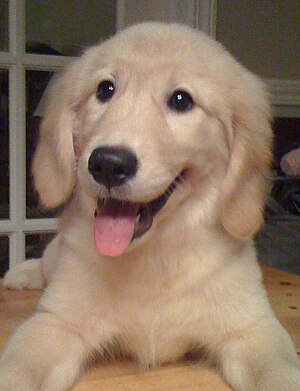 |
| English: Golden retriever puppy, three months old. (Daisy Parker) (Photo credit: Wikipedia) |
A clean home can be hard to have with an untrained puppy.
However, there are many people out there who are not sure how to train their puppies
properly. The advice in this article will help you with that and other aspects
of puppy training.
You must work with your puppy consistently every day. Teach
your puppy good behavior throughout the day like sitting for food and barking
to go outside. They'll remember their commands when they're used frequently
with the same outcome every time. If your training is sporadic, your puppy's
behavior will be too.
Older pets have limitations that younger animals don't.
Older puppies are harder to train because of developed quirks, so it is best to
learn to live with those that are manageable. Keep in mind that when you adopt
a puppy that is older, it may have developed certain habits. Learn to accept
most behaviors and concentrate only on the most unacceptable ones.
It terms of barking, take note of the sorts of things that
cause your puppy to bark a great deal. Knowing the triggers will help you
control the behavior. For example, if your puppy only barks excessively when
visitors enter your home, enlist a friend to come over to help you address the
behavior, at the time of the trigger event.
Research to see which training methods work best for your
specific puppy breed. Different breeds learn at different speeds. Some breeds
will require a lot of patience and repetitive training, such as bull puppies or
basset hounds.
To keep your training sessions positive and effective, you
should also keep them short. You should use at most 15 minutes for training.
Any longer and the puppy will become frustrated and will not respond correctly.
After each time you do some training, spend time horsing around with your puppy
and let him know what a good boy he is.
Maintain consistent volume and voice tone over time when
giving your puppy commands. This lets them know you're serious and that they
must obey. It also allows your puppy to realize the differences in each
command.
Never raise your voice to your puppy during training.
Shouting to counteract barking can actually be a positive reinforcement for puppies,
since they do not understand that you are not reacting at their barking. The
best thing to do is remain calm and try to distract your puppy so that they
stop barking.
When you start training a puppy, do not assume that he won’t
bite you. An untrained puppy might think that you're part of his group, and he
may think that he's the leader. Understanding how to effectively display
dominance to your new puppy will help them to recognize you as the alpha in the
pack. Puppies aren't fully attuned to typical human behaviors, so biting and
acting out is always a possibility.
Focus on the things your puppy is telling you in order to
know what things that he doesn't want. Do not push your puppy toward
interacting with other animals and people. Your puppy has his reasons for
discomfort, and you should give him a little space. Pushing too hard may result
in aggressive behavior that could have been avoided.
Never use treats as the only reward for good behavior. Puppies
need food for survival, so reward them another way. In addition to you giving
food, you need to pet your puppy as well, and praise it for good behavior.
Puppy training techniques will need to vary according to the
puppy. If your puppy doesn't respond to a certain reward, find another that he
will better enjoy. A puppy that performs better for praise is easier to manage
in most situations.
You have to be consistent with the crate training of your
new puppy. If you remove the pup from the crate, see to it that he has the
means to go potty. As time passes, your puppy will start to be able to use the
restroom at the appropriate times.
Consistency is really the key to successfully training your puppy.
Consistency must apply in terms of your commands, your tone of voice and the
different rewards you offer for good behavior.
Do not allow your puppy to pull you around when on a walk.
This is something that a lot of puppy owners want to learn how to break, and it
is easy to do so. Most pet stores carry affordable harnesses, which prevent
behaviors like pulling or straining during walks.
Among the first commands that you should teach your puppy is
the command "leave it," which tells the puppy to drop whatever he has
in his mouth and back away from it. You can protect their safety and stop them
from destroying valuables by teaching them to obey this simple command.
Armed with the tips above, you ought to understand how
training your family puppy is crucial to keeping your home clean. You will have
a puppy that is trained well once you use simple strategies on a regular basis.

No comments:
Post a Comment